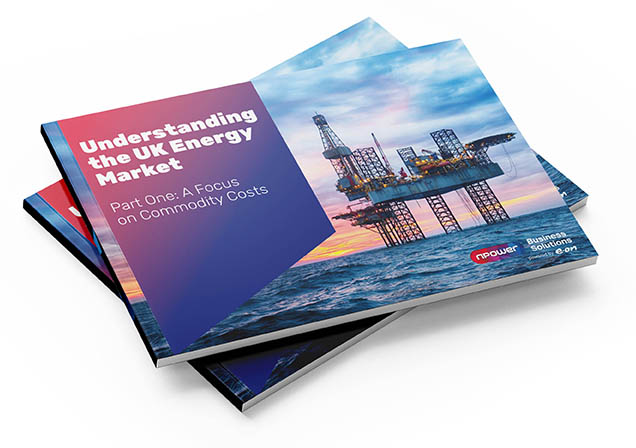Understanding the UK Energy Market
Making sense of energy prices
With a range of domestic and international factors impacting energy and the price you pay for it, understanding the market has never been more vital. In our reports, you’ll discover where our energy comes from, global influences, and the UK’s changing energy mix; enabling you to make better informed decisions for your business.
Scroll down to access our two-part report, video overview, key facts infographic, and jargon-busting glossary.
A focus on commodity costs
Where does our energy come from, how does this impact what businesses pay, and, despite the growth in renewables – why are prices still so high?
To answer these questions, download part one of our ‘Understanding the UK Energy Market’ report.
By downloading part one, you’ll also receive part two. This report explores the factors influencing energy markets and price, and what this means for you and your business.
The energy landscape
Energy price changes are influenced by local and global factors. Our overview video summarises the main drivers that are contributing to the instability in the market today, including the impact of the changing energy mix, global supply pressure and world events. Watch our informative video to find out more.
Energy made simple
The energy industry is full of acronyms and terms, and being clear about what they mean is vital to understanding the market. That’s why we’ve created a free jargon-busting glossary.
Understanding the UK Energy Market
With so much going on in the energy industry currently, it’s hard to keep up. We want to help you understand the UK’s changing energy industry by sharing insights and trends so you can make more informed energy decisions for your business.
The first part of our report considers where our energy comes from and how it impacts what we pay. The second part focuses on how domestic and international factors have an impact on energy markets and prices.
Later reports will consider how the UK’s changing energy mix will impact transmission and distribution costs added to bills, plus the other non-commodity costs that together make up as much as 60% of electricity bills.
Find out more about how the UK energy market works

/npm214%20Digital_H_UB139.jpg)
